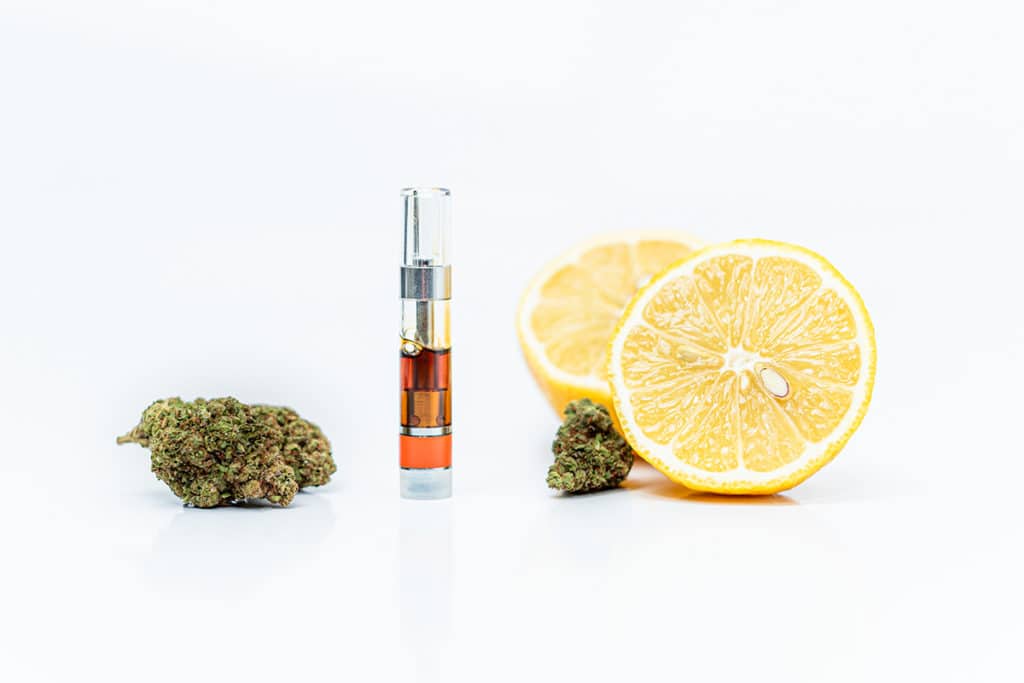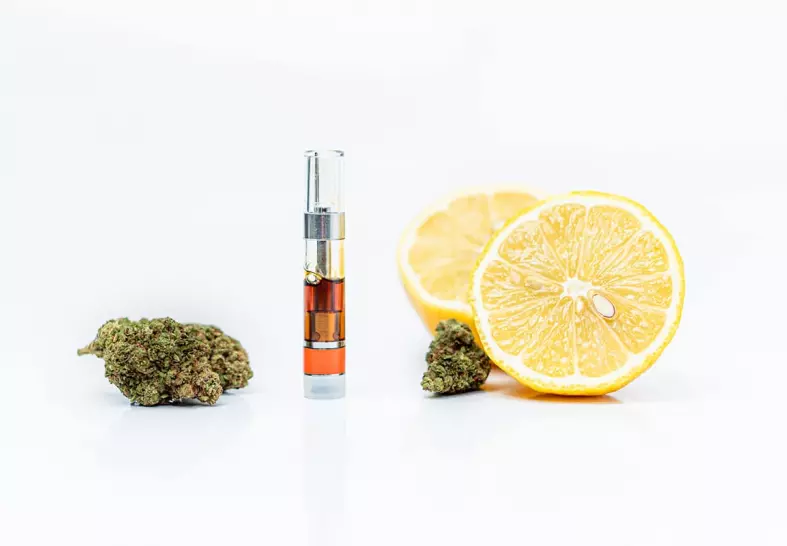Terpenes may be the plant oils that give all of our favorite plants their characteristic scents, but they’ve also been discovered to have various therapeutic benefits, as well.
There are a few terpenes that are associated with pain relief, such as linalool, myrcene, pinene, and limonene. There are more listed below, but let’s talk about why terpenes are associated with pain relief.
In cannabis plants, the same glands that produce pain relievers such as THC and other cannabinoids as CBD are also the glands that produce the terpenes that give cannabis its trademark odor. Depending on the strain, your cannabis may smell of lemons (limonene), it may smell pungent and earthy (myrcene), or it may smell mostly of pine. There is always a dominant terpene in any strain, so you’ll never have one that smells only like lemons or like hops; it will always be a mixture.
Here’s a list of what terpenes help best with pain.

Alpha Humulene
Smell: spicy, herbaceous, like hops
Vaporizes at 388°F (198°C)
Formerly known as alpha-caryophyllene
Humulene is a terpene that is often used in pain relieving salves because it is capable of reducing swelling and inflammation when it’s applied to the surface of the skin where the pain is located.
Linalool
Smell: lavender
Vaporizes at 388°F (198°C)
Linalool is the characteristic smell of lavender and is used after surgery. There was one study that shows that inhaling linalool caused participants to use significantly less morphine to treat their post-operational pain.
Linalool reduces the effectiveness of acetylcholine in the body, which functions as a neurotransmitter and is used to activate muscles. Reduction in muscle spasms and contractions can help relieve pain and as a result, linalool is associated with pain relief because of how it affects acetylcholine.
Linalool also raises your body’s levels of adenosine, which is a chemical that acts as an inhibitory neurotransmitter or as a nervous system depressant. Elevated levels of adenosine in the body will promote sleep, which explains why scents containing linalool (such as lavender and some strains of weed) are responsible for promoting sleep.
Your body has receptors specifically for adenosine, much like it has cannabinoid receptors. SLU researchers in 2015 showed that the A3 adenosine receptor can activate “off signals” for pain and provide relief.
Limonene
Smell: citrus
Vaporizes at 348°F (176°C)
Limonene is a smell that many people enjoy and it just so happens to be the second most plentiful terpene in cannabis right behind myrcene.
Limonene is anti-inflammatory and was found to be helpful in relieving pain in rats. A study on pregnant women also found reduced pain by lemon aromatherapy.
Myrcene
Smell: musk, mangoes, earth
Vaporizes at 332.6°F (167°C)
Myrcene is the most abundant terpene that is present in cannabis and because of this, there’s more study on this terpene than any other.
Strains that are considered to be highly sedative often contain more than 0.5% myrcene and as a result, can help alleviate pain by reducing your body’s perception of it. Studies have shown that myrcene stimulates opioid receptors in both rats and studies in humans echo the idea that it acts as a pain reliever, but it isn’t known whether myrcene works via the same action.
Myrcene also acts as an anti-inflammatory according to a study on osteoarthritis in 2015.
You can find a lot of myrcene in almost any cannabis strain, but here are some of the most popular if you’re looking for pain relief:
ACDC
Harlequin
Sour Diesel
White Widow
Alpha-pinene
Smell: pine
Vaporizes at 312.8°F (156°C)
This is considered to be the most abundant terpene on planet earth, because it’s the terpene that gives evergreen trees their characteristic smell. In fact, coniferous forests cover approximately 15% of the earth’s total land, so it’s no wonder that this terpene is as popular as it is in scented candles, air fresheners, and other scented products.
Pinene acts as a potent anti-inflammatory. Alpha-pinene was found in a study to reduce dental pain in mice.
Pinene dominant strains aren’t common, but here are some notable strains with pinene:
Blue Dream
OG Kush
Purple Punch
Mimosa
Beta-caryophyllene
Smell: spicy, pepper, rosemary
Vaporizes at 266°F (130°C)
Beta-caryophyllene is a terpene that actually acts on your body’s CB2 receptor and acts as an agonist.
In a study involving rats, beta-caryophyllene was determined to be useful in decreasing inflammatory pain in both male and female rats, but males responded to it better.
Eucalyptol
Smell: eucalyptus, cool, mint
Vaporizes at 341.6°F (172°C)
Eucalyptol smells exactly what it’s named for: eucalyptus. It gets its name because it is the primary terpene in the essential oil of the eucalyptus tree.
When applied topically, it relieves pain and acts as an anti-inflammatory. In a study on mice, it was shown to relieve pain and inflammation associated with gout.
Notable strains with eucalyptol:
Headband
ACDC
GSC (Girl Scout Cookies)
Super Silver Haze
Bisabolol
Smell: fruity, chamomile
Vaporizes at 307.4°F (153°C)
Bisabolol is also known as levomenol and is associated with the smell of such things as apples and chamomile tea.
It’s anti-inflammatory, antibiotic, anti-microbial, and antioxidant. It’s popular in topical formulations of medicine due to its ability to increase the skin’s ability to absorb molecules.
Notable strains with bisabolol:
Headband
Mandarin Dream
Super Sour D
Pink Kush
